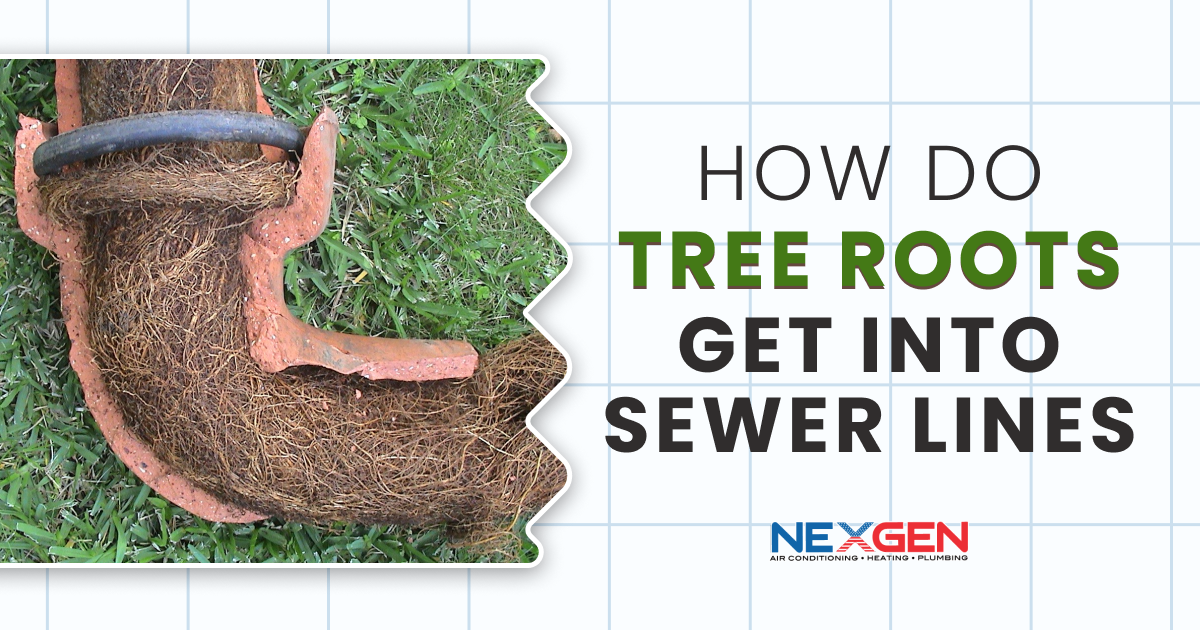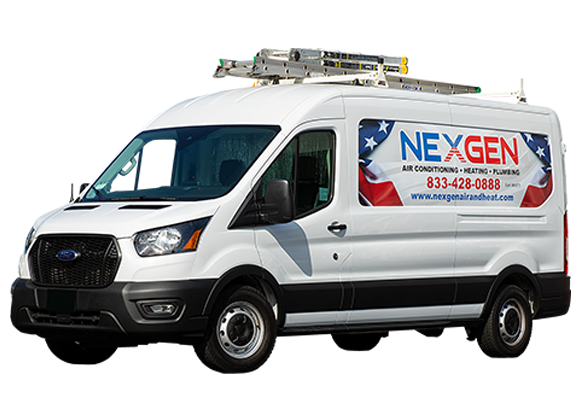How Do Tree Roots Get Into Sewer Lines?

Trees can add shade and beauty to your property. They’re also good at boosting curb appeal. But they’re often not a benefit for your sewer pipes. Tree root intrusion is a more common problem than many people realize. When a customer learns their plumbing woes are caused by tree roots, they often ask, “How do tree roots get into sewer lines?”
To answer that question, let’s first look at how tree roots work. Any tree requires enough water to survive. Water contains the moisture, nutrients, and oxygen needed for a tree to grow and sustain itself (roots naturally grow toward water sources). Sewer lines contain all of these. And just like tree roots, they’re contained underground.
How do roots find the sewer line in the first place? We’ll now explain this in more detail:
The Sewer Pipe Is Damaged
A pipe can develop holes or crack due to corrosion. Ground movement and settling can cause damage as well. No matter how minute an opening is, it can release enough water to attract roots. And the roots can use this entry point to grow into the pipe, fill it up, and catch grease, oil, fats, dirt, and other materials that contribute to a blockage.
But the sewer line doesn’t have to be leaking or broken to attract tree roots.
Sewer Vapors Are Released Into the Soil
As water flows through a pipe, moisture-, oxygen-, and nutrient-filled vapors can escape into the soil, even if there isn’t a true leak, and reach nearby roots. Sensing the direction these vapors came from, roots grow toward the sewer pipe. Tree roots are strong and persistent. They can sometimes break into or crush a pipe; or, if there’s a loose joint or connection, push it apart and begin to grow inside.
Can I Stop Tree Roots From Getting Into Sewer Lines?
If tree roots have reached or gotten into a sewer line, the pipe must be repaired by a professional plumber. Only they have the experience, knowledge, and tools to resolve the problem. Avoid using chemical solutions. They can poison the tree and contaminate the environment. Plus, depending on what the pipe is made of, chemicals can do more damage. If a pipe is already weakened, chemicals can cause it to break down and fail.
However, there are safer ways to prevent tree roots from affecting sewer lines, including:
- Planting Trees Far from the Line: When you plant a new tree, know the location of your sewer line first. Don’t plant the tree nearby. The farther you position trees in your landscaping from a sewer line, the less likely they’ll affect your plumbing.
- Scheduling Annual Plumbing Inspections: During an annual inspection, a technician can run a camera through your pipes to check for blockages and damage. Small issues can be fixed before major plumbing problems occur.
- Replacing Broken Pipes: If you know there’s a drip, crack, or fracture in a sewer line or a pipe has started to corrode, have it replaced by a professional. Prompt repairs reduce the risk of having to ask, “How do tree roots get into sewer lines?” and can increase your plumbing system’s lifespan.
How Do I Know Tree Roots Are In My Sewer?
Aside from a plumbing camera inspection, there are other ways to suspect a tree root problem. Common signs of tree roots in a sewer line include backed-up toilets or plumbing fixtures, soggy areas on your lawn, and frequent drain clogs. The smell of sewage in your home means a sewer line has been compromised. Other signs of damage can range from as subtle as a gurgling toilet to visible water damage along your home’s foundation.
Call NexGen for Tree Root Removal
At NexGen, we provide safe and effective tree root removal services in Southern California. We can use a drain snake with a rotating cable, a rooter machine, or hydro jetting to break up tree roots. Our licensed, insured technicians also fully repair affected sewer lines and take preventative measures to inhibit future intrusions. To learn more or schedule professional tree root removal on your property, contact us online or call (833) 729-9735.





















